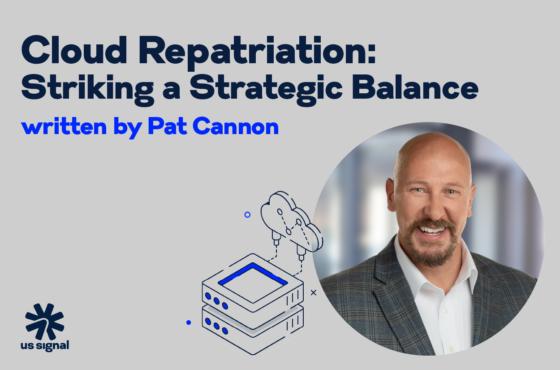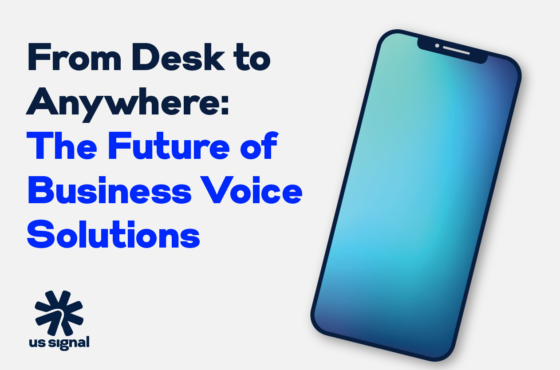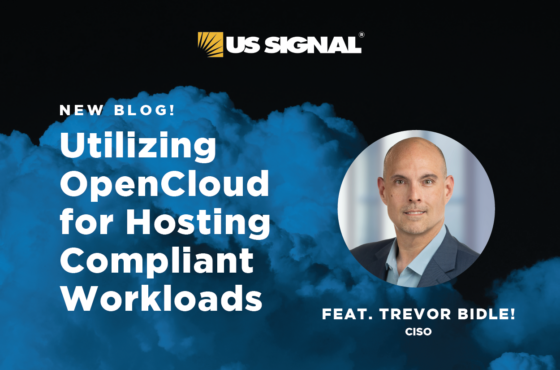Cloud Connectivity Security Challenges (and How to Mitigate Them)
December 27, 2023
Cloud
There’s a good chance that when business line leaders — and even the CEO — push for cloud services, they’re not thinking about potential security challenges. That’s left to IT, and there can be a lot of issues to take on.
The cloud is really all about connectivity. Cloud computing works by enabling client devices to access cloud applications and data over an internet connection from remote physical servers, computers, and databases. Any access point along that connection, including at the endpoints, can present a security risk.
The following are among the common security challenges associated with cloud connectivity (directly and indirectly) — and what can be done to deal with them.
1. Cyber Threats
The internet is both the workplace and playground of cyber criminals. So connecting via the internet is going to entail countless cyber threats. New threats are constantly emerging, and they’re becoming stealthier and increasingly destructive. Cyber threats aren’t going away. The best you can do is to be ready for them. Be able to defend against them and be prepared to deal with them if they do breach your organization.
Mitigation solution(s):
- Secure your perimeter by protecting all endpoint devices and your border routers. Separate sensitive data from your corporate network and limit access to such data. Review and understand your organization’s internet services and access options and what security mechanisms are included or can be implemented.
- Conduct IT security and cybersecurity audits to identify overall security gaps and vulnerabilities. Make sure these audits cover all network access as well as endpoints.
- Regularly review and update your IT security strategy, as well as your incident response plan, business continuity/disaster recovery plans, and even your employee security training. Test all plans to ensure they work the way they’re supposed to work.
- State on top of the latest IT security news and trends. Follow security professionals and influencers on social media. Browse security-related social media topics. Participate in IT security forums. Listen to IT security podcasts. Check vulnerability and risk advisory feeds. Attend IT security events.
- Think beyond merely managing your third-party risks and develop a comprehensive strategy of cyber supply chain risk management (C-SCRM). NIST Special Publication SP 800-161r1 and NIST Key Practices in Cyber SCRM can help you create a C-SCRM program.
2. Cloud Misconfigurations
Cloud misconfigurations are errors in the security settings of cloud apps and systems, including virtual machines (VMs), containers, serverless environments, and infrastructure as code (IaC). Administrative oversights, high-velocity development environments, a lack of awareness, and security misconceptions are often to blame.
Common misconfigurations include open ports for outbound server traffic, overprivileged identities, a lack of monitoring, unsecured storage (like open S3 buckets), the use of default passwords and credentials, and third-party misconfigurations.
Mitigation solution(s):
- Make rechecking configurations a standard process. Development and operations teams typically focus on creating new cloud apps and servers and configuring them. But then they don’t recheck the configuration.
- Automate security and configuration checks.
- Regularly audit and remediate cloud configurations.
- Incorporate working security settings into cloud environments' base configuration settings to allow future instances of a piece of cloud infrastructure or application to benefit from past lessons.
- Implement Infrastructure as Code (IaC) to maintain consistent and correct configurations.
3. Going Beyond Your Perimeter
When workloads and users move beyond the on-prem perimeter, your standard on-prem perimeter protections don’t extend into the cloud. While you must still control your company’s internal network, you must now rely on the cloud services provider (CSP) for cloud security.
Mitigation solution(s):
- Understand the division of responsibilities between your company and the CSP. Typically, the CSP protects the underlying infrastructure that powers cloud and colocation offerings. As the customer, you’re responsible for the security of your data, applications, operating system, and any equipment you own in the case of colocation services.
- Get clarification from any CSP you work with so you fully understand your organization’s responsibilities and what you can expect from the CSP. You’ll want to know the specifics of how the CSP protects the underlying cloud and network infrastructure to ensure greater peace of mind.
- Consider managed security services, such as managed endpoint protection, remote monitoring, and patch management, to meet specific requirements you have for security beyond your on-prem perimeter.
4. Access
Any time someone in your organization — or who works with your organization — accesses your cloud services and resources, there’s a potential for a security issue. It could be due to malicious intent or even negligent behavior.
First, keep in mind that not everyone requires access. In some cases, even those that require access don’t need it to everything. Second, you can implement all the training in the world to help employees, contractors, vendors, and anyone else accessing your systems and cloud resources understand security best practices. Issues can still arise, so it’s important to have policies and technologies in place to cover you.
Mitigation solution(s):
- Limit access from the internet to your cloud resources, unless necessary, using network-level security in the cloud. This includes edge network security with DDoS protection, web application firewall (WAF) policy enforcement, identity-aware control access, and intelligent threat detection with real-time monitoring, logging, and alerting.
- Employ a zero-trust security strategy. The zero-trust security model means no one and nothing is trusted by default, whether inside or outside of your network. Zero trust allows you to shift access control from the network perimeter to individual users and devices.
- Implement security best practices and technologies for identity and access management (IAM). Systems used for IAM include single sign-on systems, two-factor and multifactor authentication, and privileged access management. These technologies also provide the ability to securely store identity and profile data and data governance functions to ensure that only necessary and relevant data is shared.
5. Hybrid IT and Multi-cloud Environments
Cliché as it sounds, one size does not fit all when it comes to IT environments. More companies than ever are employing multiple IT environments — hybrid IT — to place workloads where they’ll perform best. According to TechTarget's Enterprise Strategy Group (ESG) research, 86% of respondents are now using two or more public cloud infrastructure providers within their IT environments.
The more environments there are, the more connections there are to implement, manage and secure. Challenges that can arise include configuration errors, inconsistent (or nonexistent) security patches, data governance, and lack of granularity. Interoperability can also be challenging when you move apps between two or multiple cloud ecosystems.
Mitigation solution(s):
- Secure connections between all of your environments — in the cloud, on-prem, or in a colocation facility — to keep your deployments as private as possible and reduce exposure to threats. You can avoid affecting critical workflows using private access options that let cloud-based or on-premises clients communicate and consume with supported APIs and services without an external IP address.
- Use micro-segmentation to regulate and manage communication between apps and services within your network. Micro-segmentation helps contain lateral movement with fine-grained security policies to control traffic precisely if an attacker infiltrates your network. You can also use micro-segmentation policies to isolate critical systems, strengthening regulatory compliance.
- Set cloud interoperability and portability standards before starting a migration project.
- Use multi-layer authentication and authorization tools for account verifications in public, private, and hybrid cloud ecosystems.
Make the Connection
Cloud connectivity security issues are only part of IT departments' overall security challenges. US Signal can provide guidance and specific solutions to help create a comprehensive IT security strategy.
Learn about some of our specific security services here, or contact us to learn about the many ways we can help.


